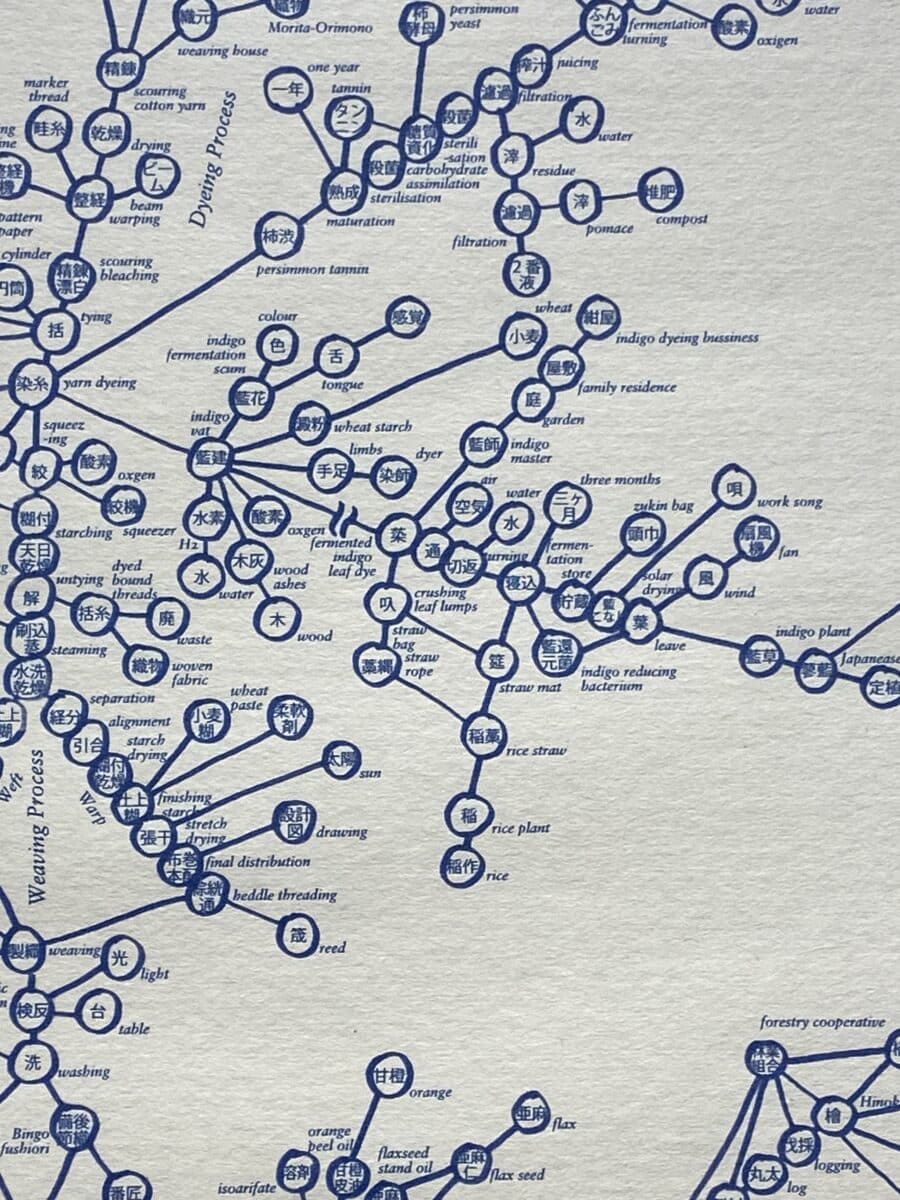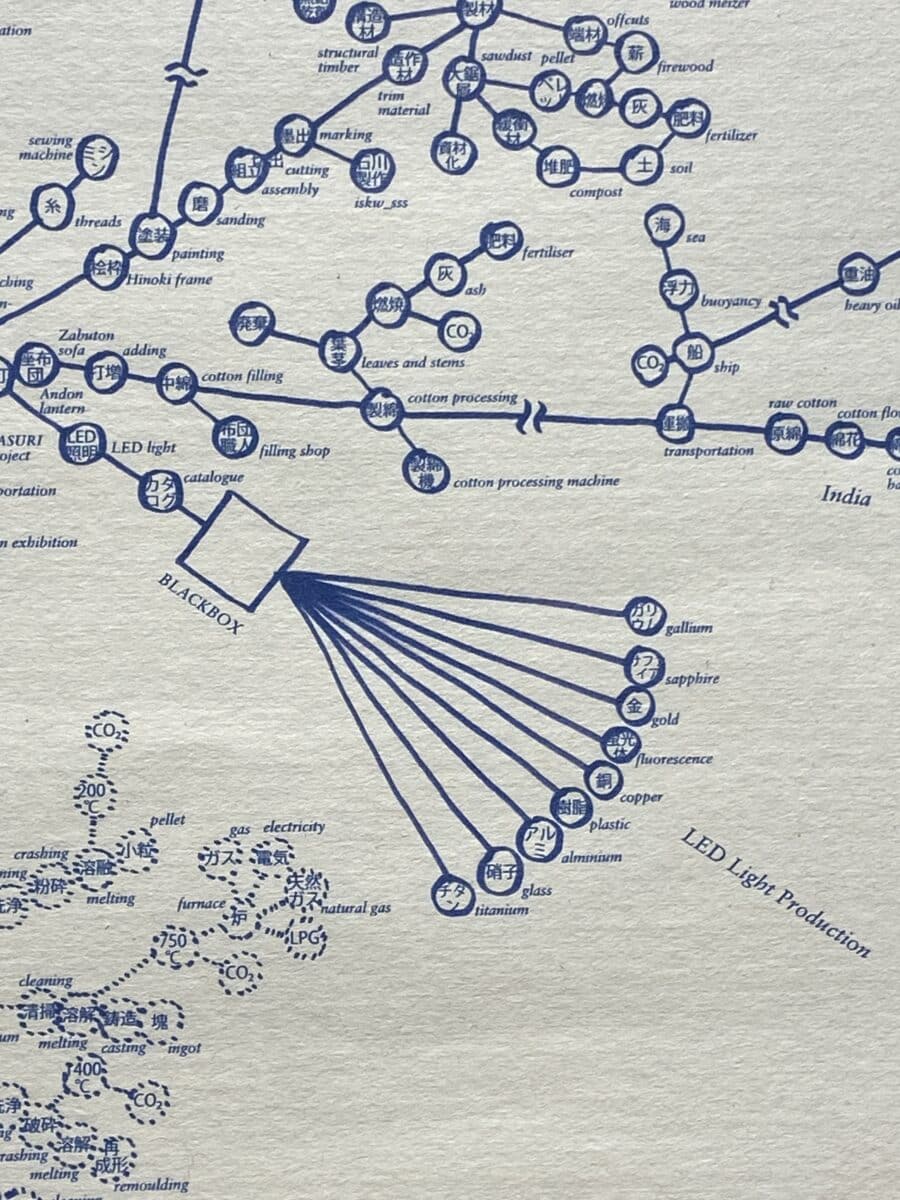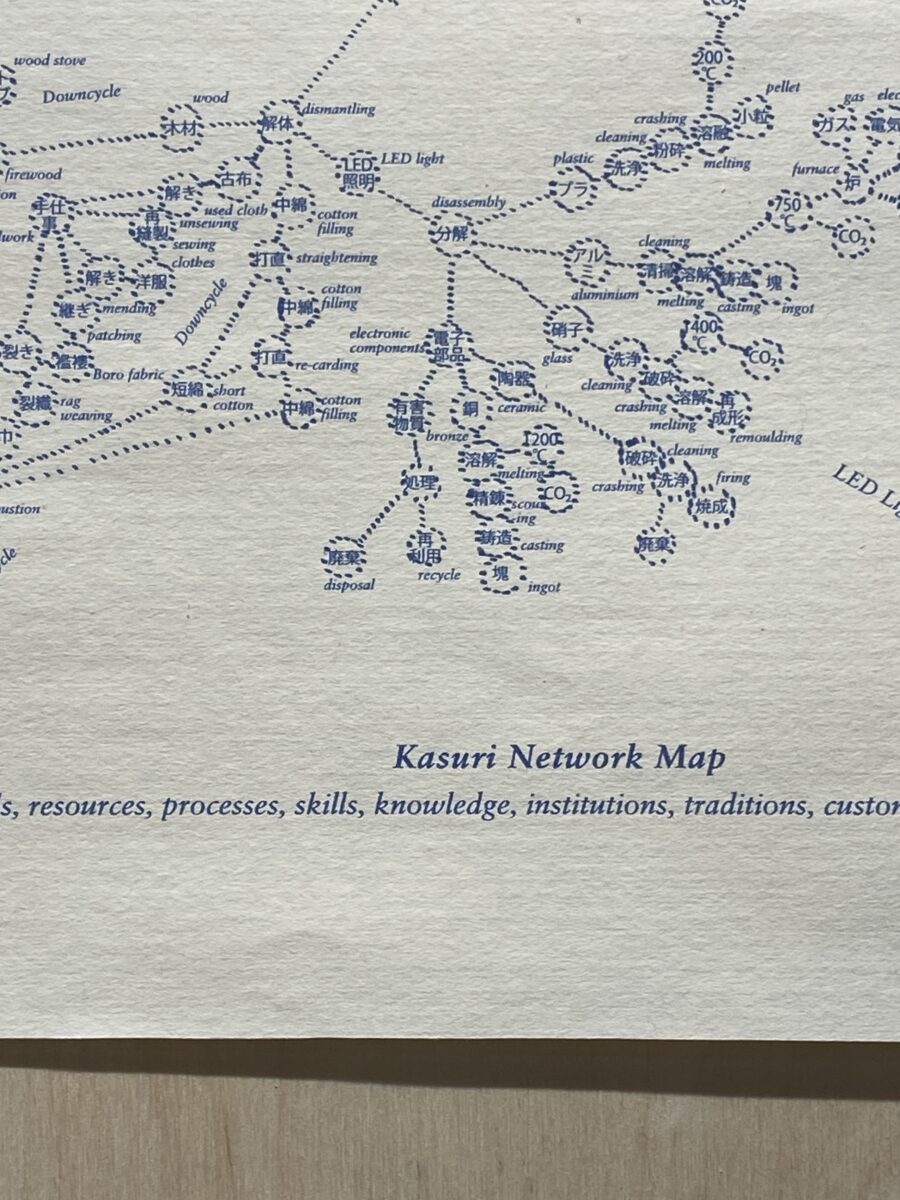Kasuri Nomad Horizon

This actor-network diagram traces the journey from raw materials to eventual disposal for Kasuri Nomad Horizon, a furniture set crafted from Bingo Kasuri, a traditional Japanese cotton fabric. Created for the Distillation of Architecture: 家具 exhibition at the Architectural Association School of Architecture from the 17th January to the 7th March 2025, the diagram serves as a visual exploration of interconnected actors—both human and non-human—within this material system.
Bingo Kasuri is a handwoven textile made by dyeing cotton threads, often with natural indigo, to form intricate patterns. The diagram is printed in indigo ink on vertically oriented Japanese paper, evoking the format of a traditional hanging scroll.
Circles represent ‘actors’ while the connecting lines visualise their relationships. These actors include not only materials, but also people, tools, skills, energy sources, institutions, and historical contexts. Japanese names are written inside the circles, with English translations beside them.

The length of each line indicates geographic or temporal distance—longer lines suggest more remote connections. Particularly distant relationships are marked by wavy, abbreviated lines.
The central production flow—from raw cotton through spinning, dyeing, weaving, sewing, and assembly—is arranged vertically, with upstream processes toward the top and downstream ones toward the bottom. Tributary lines branch off to represent secondary processes such as tool or material sourcing.
Rather than reconstructing the production process in linear detail, this hand-drawn diagram—rendered with a felt-tip pen to emphasise looseness and openness—aims to make visible the complexity of the actor network. For clarity, digital typography is used for small textual elements. Descriptions are based on archival research and interviews. Areas where the network could not be traced are shown as black boxes—the only one here corresponds to an LED light, the sole industrial product used in the project. This black box highlights both the low traceability of industrial goods and the vast, opaque systems behind them.

In contrast, traditional production methods rely on local resources and shorter, more transparent networks. Yet they are also characterised by tacit knowledge, which remains difficult to visualise or document. Such knowledge—embedded in both materials and tools—carries significant ‘weight’ as an actor in the network. Although each actor is depicted as an equal circle, their density and organic clustering convey the relative depth of embedded detail, including local characteristics and climatic conditions.
Future disposal paths are indicated with dotted lines, acknowledging their indeterminacy. Coaxial lines group operations within the same process, though the diagram’s directional shifts signal branching or divergence. This layered structure suggests both clarity and incompleteness, leaving room for actors or processes not yet named.
Historically, Bingo Kasuri garments were worn as everyday clothing from the late 18th century onward. After repeated repairs—such as patching and resewing—they were reused as rugs or children’s garments, then cleaning cloths, and ultimately reduced to ash through burning, returning to the soil in a closed material loop.

Weaving and bundling for Kasuri patterns were often done by women during evening hours, supplementing the income of struggling farm households. The resulting patterns are a testament to the resilience and dignity of women who sustained their families through both agricultural labour and creative expression.
This drawing reveals the dense, layered world that underlies Bingo Kasuri—a fabric shaped by memory, manual labour, and intergenerational knowledge. It makes visible the human and non-human actors that give rise to its quiet beauty, inviting reflection on the cultural and ecological values woven into everyday materials.
Mio Tsuneyama is one half of the design and research practice Studio mnm. They are based between Tokyo and London.
